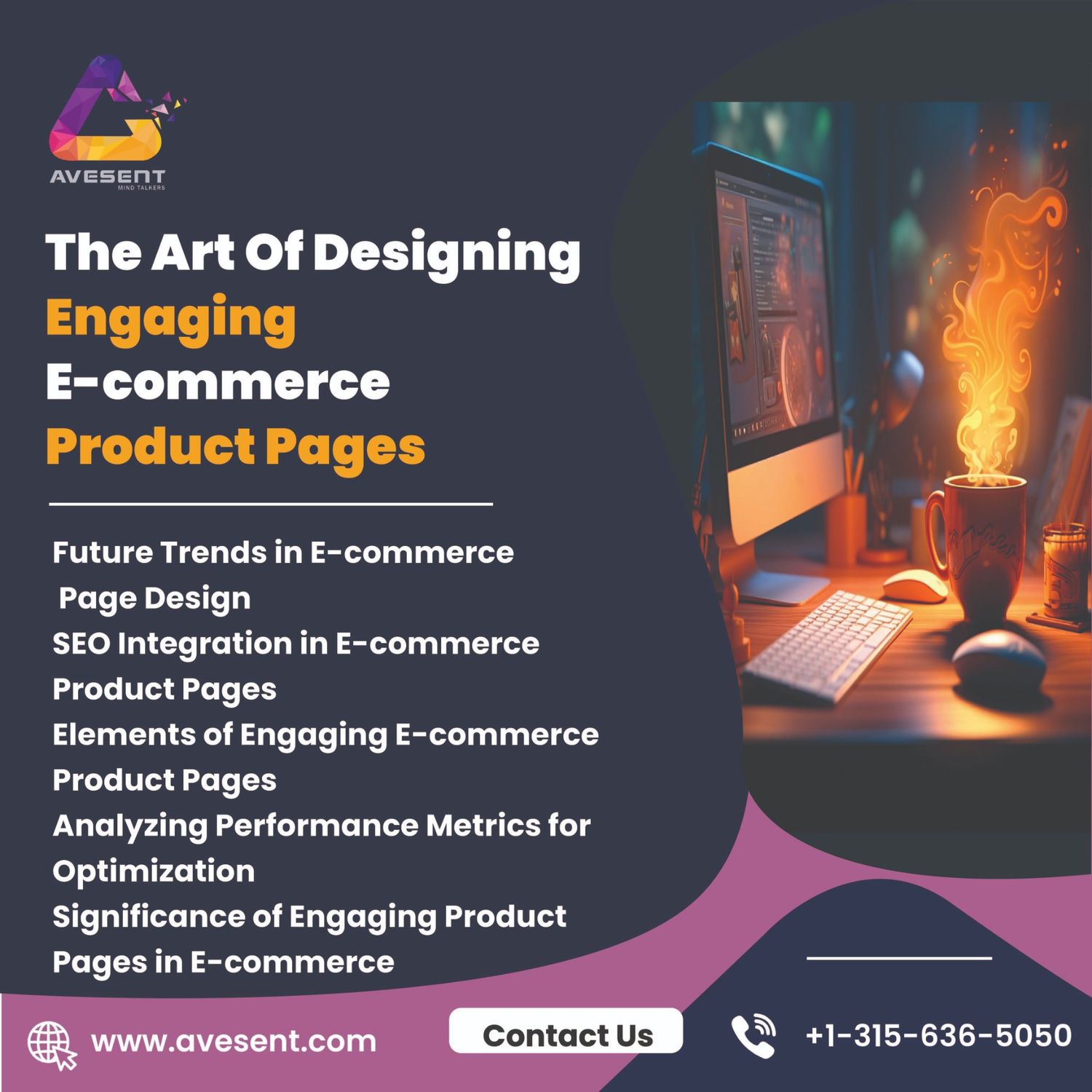Crafting Compelling E-commerce Product Pages: The Intersection of Design and SEO
In the digital realm of e-commerce, product pages serve as the digital storefronts that entice and engage potential customers. Designing captivating product pages isn’t merely about showcasing products; it’s about creating immersive experiences that drive conversions while aligning with SEO (Search Engine Optimization) best practices. Let’s explore the art of crafting engaging e-commerce product pages that captivate audiences while optimizing for search engine visibility.
Significance of Engaging Product Pages in E-commerce
1. Gateway to Conversions
Product pages are conversion catalysts. Engaging designs prompt visitors to make purchase decisions.
2. Reflection of Brand Identity
Pages mirror brand identity. Well-designed pages convey brand values and aesthetics.
Elements of Engaging E-commerce Product Pages
1. High-Quality Visuals and Media
Utilize captivating visuals. High-resolution images, videos, and 360-degree views enhance product appeal.
2. Compelling Product Descriptions
Craft descriptive content. Engaging, SEO-optimized descriptions highlight product features and benefits.
3. Clear Call-to-Actions (CTAs)
Include clear CTAs. Prominent buttons or links guide users towards purchasing actions.
SEO Integration in E-commerce Product Pages
1. Keyword-Optimized Titles and Descriptions
Incorporate targeted keywords. Optimize titles and descriptions for improved search engine visibility.
2. Image Alt Text and SEO-Friendly URLs
Optimize images and URLs. Use descriptive alt text for images and create SEO-friendly URLs.
Strategies for Designing Engaging Product Pages
1. User-Friendly Navigation and Layout
Simplify navigation. Intuitive layouts aid users in finding and exploring products seamlessly.
2. Personalization and Recommendations
Implement personalized features. Use algorithms to suggest related or recommended products based on user preferences.
3. Social Proof Integration
Leverage social proof. Display customer reviews, ratings, and testimonials to build trust.
Analyzing Performance Metrics for Optimization
1. Conversion Rates and Click-Throughs
Monitor conversion rates. Analyze click-through rates to assess page effectiveness.
2. Bounce Rates and Dwell Time
Evaluate bounce rates and dwell time. Adjust designs based on user interaction metrics.
Continuous Optimization and Improvement
1. A/B Testing for Page Elements
Conduct A/B tests. Experiment with different layouts or content to optimize user engagement.
2. Mobile Optimization
Prioritize mobile responsiveness. Ensure seamless experiences across devices for broader reach.
Future Trends in E-commerce Page Design
1. Enhanced AI-Driven Personalization
Embrace AI-driven customization. Utilize AI algorithms for advanced personalization of product pages.
2. Augmented Reality (AR) Integration
Explore AR experiences. Implement AR features to enable virtual product try-ons or visualizations.
Conclusion
Designing engaging e-commerce product pages isn’t just about aesthetics; it’s a strategic fusion of captivating design elements and SEO optimization. By crafting pages that appeal to customers visually and align with search engine requirements, brands can create immersive experiences that drive conversions and bolster online visibility.




